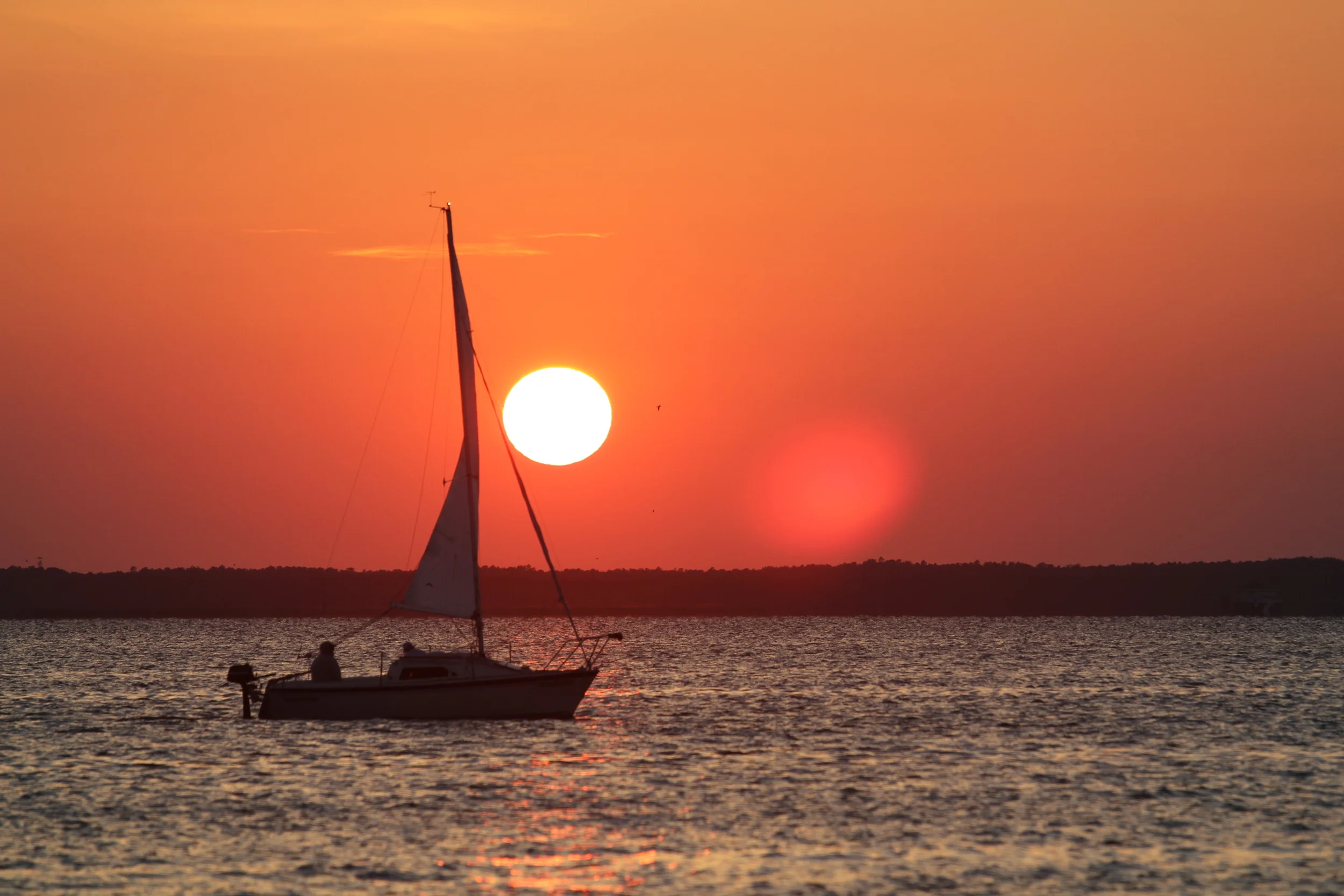Fleets
BBYC offers the Mariner, Lightning, Laser and Sunfish for adult racing and casual sailing. Junior sailors can begin sailing in the Opti at age 7 and can later sail the Laser Radial (single handed), Sunfish (single handed) or Club 420 (double handed). BBYC members have a variety of cruising boats and there are scheduled cruising activities during the year.
Optimist (dinghy)
The Optimist or Opti is a small, single-handed sailing dinghy intended for use by children up to the age of 15. Nowadays boats are usually made of fiber reinforced plastic, although wooden boats are still built.
It is one of the most popular dinghies in the world, with over 150,000 boats officially registered with the class. While younger, lighter sailors begin in Optimists, competitive sailors usually weigh between 65 lbs. and 130 lbs. Optimists can be sailed comfortably by people from age 8 to 15. This wide range of weights, which is not typical of most dinghies, is made possible by different cuts of sail. Due to its inherent stability, unstayed rig, robust construction and relatively small sail, the Optimist is often sailed in up to 30 knot. (www.optimist.org).
Sunfish
The Sunfish is a 14 foot sailboat usually sailed by one person. Kids and adults can both enjoy this boat. If you're looking for lots of tiller time, this is the boat for you! Your instructor will coach you from a motorboat. These boats are raced in many events at BBYC, including Thursday night, Friday afternoon, and Saturday afternoon racing. To learn more visit (www.sunfishclass.org).
Laser Standard and Laser Radial
The International Laser Class sailboat, also called Laser Standard and the Laser One is one of the most popular single-handed dinghies in the world. As of 2011, there are more than 250,000 Lasers worldwide. A commonly cited reason for its popularity is that it is robust, and simple to rig and sail. The Laser class provides very competitive racing due to the very tight class association controls which eliminate differences in hull, sails, and equipment.
The term "Laser" is often used to refer to the Laser Standard (the largest of the sail plan rigs available for the Laser hull). However there are two other sail plan rigs available for the Laser Standard hull. The Laser Standard, Laser Radial, and Laser 4.7 are three types of Lasers administered by the International Laser Class Association. (www.laser.org).
CLUB 420
The Club 420 enables young sailors to learn teamwork, trapeze and spinnaker techniques that simply can't be learned in single-handed boats. Safe for beginning sailors and quick enough to keep collegiate All-Americans interested, sailors graduating from the Optimist class will find the C420 to be manageable and a lot of fun.
Mariner
For over 40 years, the 19 foot Mariner sailboat has been a popular day sailor and an excellent boat for learning to sail and family activities. The instructor is onboard with a group of students, usually three or four per boat. Capsizing in these boats rarely happens. This boat was especially designed for shallow water with a retractable centerboard and is raced at BBYC and the northeast. If you really like Mariners, you can join the Sunday series races at BBYC. To learn more about Mariners visit (www.usmariner.org).
Lightning
The Lightning is a sloop rigged sailing dinghy originally designed by Olin Stephens of Sparkman & Stephens in 1938. More than 15,000 Lightnings have been built since then. There are over 500 fleets of Lightnings worldwide.
There is room in the cockpit for four individuals to day sail, but a crew of three is employed when racing. On most racing teams, the skipper helms the boat and handles the mainsail, and the front crew on a racing team handles the jib upwind and is responsible for spinnaker pole handling downwind. When racing, a middle crew is relied upon for trimming the spinnaker downwind and has boat balance as a primary responsibility upwind.
The Lightning's rig is simple, but offers sophisticated sail shape controls. The hull features a hard chine design that combines the stability that provides sail-carrying power, with flat bottom sections that promote planing. The Lightning's hard chine and 130 lb. centerboard give her the stability and power of a small keel boat going to weather in strong winds and allow her to carry a very large spinnaker for breathtaking off wind rides.
At 700 pounds (318 kg), a length of 19'0" (5.8 m) and beam of 6'6" (2 m), the Lightning is easily trailered. Draft with the centerboard down is 4'11" (151.3 cm) and 5" (12.8 cm) with the centerboard raised. Information on the class can be found at (www.lightningclass.org).
Cruisers
BBYC schedules races on July 4th and Labor Day and other fun cruising activities during the year. Boat slips and dry dock space are available.









